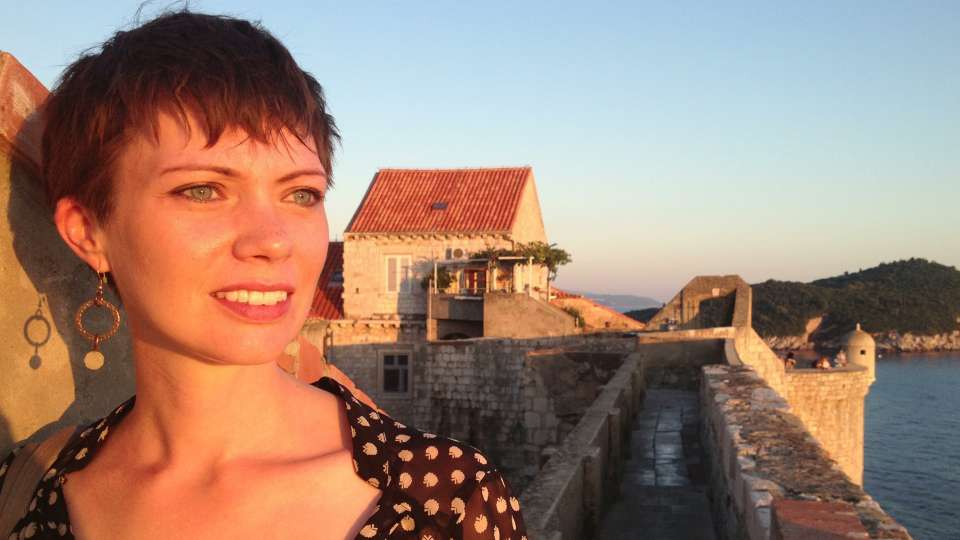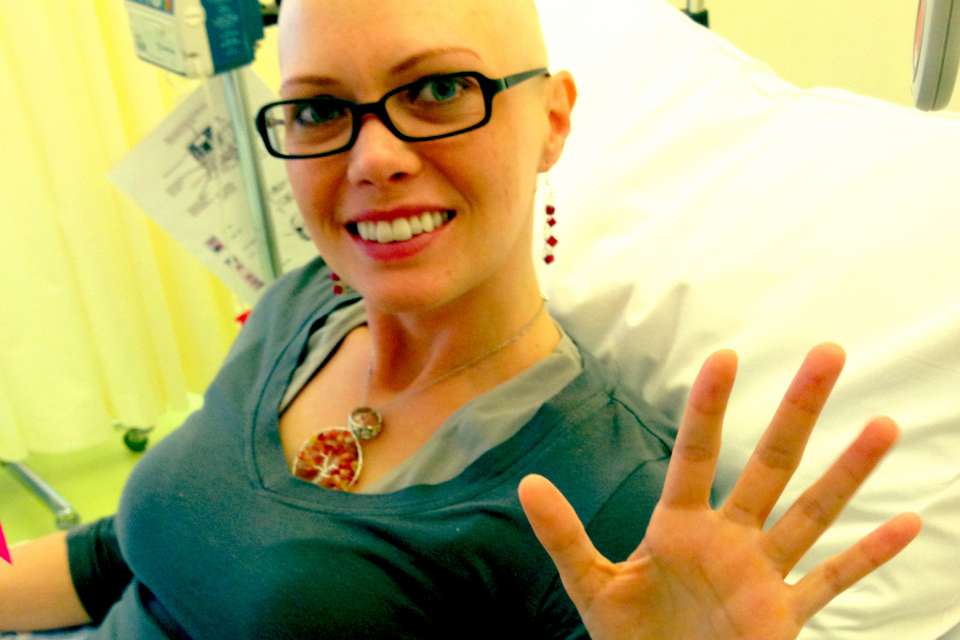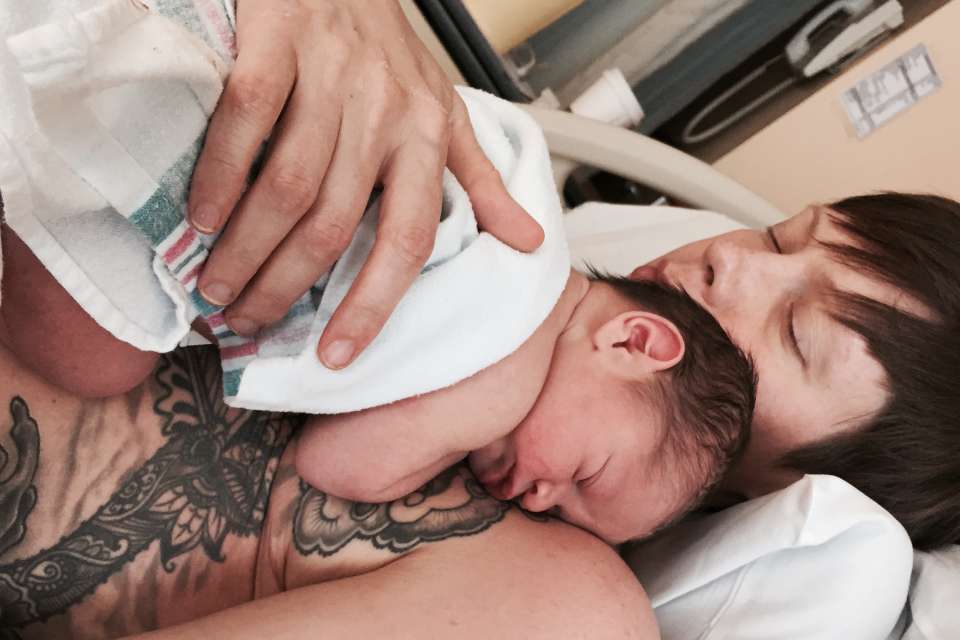
In November 2015, Lynnea Paddock decided it was now or never. Her fight against breast cancer had included nearly a year of primary treatment and three years on a drug called tamoxifen.
Lynnea was 35 years old. If she didn’t stop the tamoxifen and start trying for a baby soon, her window of opportunity might close. If it hadn’t already.
The Diagnosis
In February 2012, at the age of 31, Lynnea had been diagnosed with stage 3 invasive ductal carcinoma of the breast. She underwent a left-sided radical mastectomy, six rounds of chemo and 30 rounds of radiation.
The chemotherapy that was used to treat Lynnea increases the likelihood of infertility even in young women.
"There are just a lot of unknowns after you get dosed like that," says Lynnea. “I didn’t know if or when my fertility would come back. “Doctors don’t want to make false promises. Because for some women, their fertility does not come back.”
The chemotherapy and radiation alone gave Lynnea reason to question her chances of starting a family. But there was an added wrinkle: Lynnea’s breast cancer was a type fueled by hormones of the female reproductive system—estrogen and progesterone.
Tamoxifen—A Blessing and a Curse
There is an important chemotherapy tool that fights this particular type of cancer in premenopausal women like Lynnea: tamoxifen. Tamoxifen is the drug that Lynnea’s oncologist, Sasha Stanton, M.D., Ph.D., who practices at Seattle Cancer Care Alliance, prescribed.
“The way my doctor described it, exposing my cancer to those hormones would be like throwing lighter fluid on it," says Lynnea. “She said that tamoxifen was specifically designed for the type of cancer I had.”
Tamoxifen works by blocking the estrogen receptors in breast cancer cells so that the estrogen cannot bind to the cancer cells, and therefore can't activate them to grow and divide.
“On tamoxifen, you get brain fog, hot flashes and night sweats," says Lynnea. "You have trouble concentrating. It’s terrible on your sleep. It basically feels like menopause. But it’s effective.”
Indeed tamoxifen is very effective, says Bo Yu, M.D., an obstetrician-gynecologist at Women's Health Care Center at UWMC-Roosevelt. An estimated 23,000 women under age 45 are diagnosed with estrogen-receptor positive (ER+) breast cancer. She says that for these women, a 5-year course of daily tamoxifen results in a 40 percent reduction in recurrence risk and a 26 percent reduction in mortality.
But tamoxifen is known to cause birth defects. Women who are sexually active are always advised to use at least two forms of contraception for the duration of tamoxifen use.
If a woman decides to try for a family, she needs to stop taking tamoxifen.
"As with any treatment, a patient needs to weigh the risks versus the benefits of a proposed treatment," says Genevieve Neal-Perry, M.D., Ph.D., director of the Reproductive Endocrinology and Infertility Division at the University of Washington School of Medicine. "A patient and her health team work together to balance fertility concerns with cancer recurrence risks. It is an emotionally draining and complicated process--and unfortunately there is no one-size-fits-all answer."

Lynnea’s oncologist was someone she felt she could talk to about these hard-to-make decisions. "I picked my oncologist because I wanted someone who will see me as a holistic person," says Lynnea. "And my doctor—Dr. Stanton—is like that. She’s someone who will listen.”
Lynnea had to choose between remaining on tamoxifen or stopping tamoxifen to try starting a family without the kind of data that would make that decision at least a little bit more manageable. Though the rate of breast cancer in younger women is increasing, the bulk of research and statistical data available doesn’t cover their population and the unique challenges they face.
“At a certain point, what do you do?” says Lynnea. ”I don’t want to live my life in fear. Plus I was 35 already. It was time.”
It Was Time
Lynnea discussed the decision with her husband and Dr. Stanton and decided to stop the tamoxifen. “I felt like I’ve done what I’ve done and I will make that choice,” says Lynnea.
Fortunately for Lynnea and her husband, they did not have to live in limbo for long. Lynnea became pregnant within two months.
For Lynnea, after the night sweats and hot flashes that had accompanied tamoxifen, the hormone shifts of pregnancy seemed relatively easy.
“I was joking with my OB the entire time,” says Lynnea. "She’d ask, ‘How is your pregnancy going?’ And I’d say, ‘Well it’s easier than tamoxifen.’"
Lynnea’s pregnancy was uneventful, a welcome contrast to the intensity of the chemotherapy and radiation treatment that she had endured.
Lynnea chose to deliver her baby close to home, at UW Medical Center - Northwest. She was in labor for four hours, and gave birth using only nitrous oxide for pain relief.
“I wasn’t necessarily opposed to an epidural but I was really happy that they had nitrous oxide,” says Lynnea. “It was just enough to take the edge off, and turned out to be all I needed.”

Zachariah was born at the end of September, 2016, less than a year after Lynnea stopped tamoxifen.
Breastfeeding with Only One Breast
Lynnea’s medical team did not anticipate any breastfeeding challenges for Lynnea in spite of her mastectomy. The only possible challenge they could foresee was that with only one breast, Lynnea might not produce enough milk
“But they said that if mothers of twins can nurse two babies, this is effectively the same math, right? So that was the perspective I took,” says Lynnea.
Lynnea was able to begin breastfeeding Zachariah within an hour of his birth. At times, she had to get creative with positioning. She would also become sore because she was unable to switch sides.
But there were a few unanticipated benefits, too.
“I know friends of mine had trouble with one side leaking while the baby was nursing on the other side,” says Lynnea. “That was a problem I did not have.”
Lynnea went for drop-in breastfeeding support at the start to reassure herself that Zachariah was indeed getting enough milk. “Breastfeeding is a little bit mysterious as a new mom. Your baby seems to be eating but you have no concept of how much is actually going in,” says Lynnea.
But Zachariah was getting enough milk. Indeed Zachariah was thriving.
Next Chapter
Lynnea and her husband may decide to have another baby. She will decide on her future with tamoxifen once their childbearing is complete.

“I’ll cross that bridge when we come to it,” says Lynnea. “That’s one thing that cancer teaches you. Meanwhile, I’m grateful and happy to be where we are.”
When she was in the throes of her battle against cancer, it helped Lynnea to see other women who had gone through the experience and come out the other side. Now she is one of those women.
"I got to pick up my dreams again, have a family. I got to re-engage," says Lynnea.
There's something that Lynnea wants other women to know.
“I have been in that very dark place. It can turn out to be OK.”

 Healthy ideas for your inbox
Healthy ideas for your inbox





